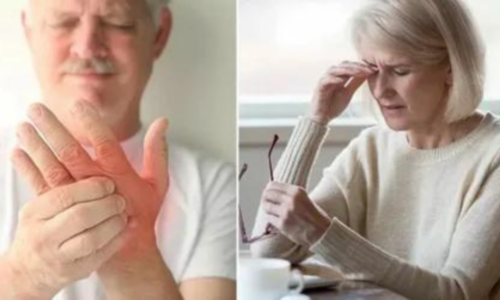
A stroke is a change in brain function, usually acute, caused by damaged or dead brain cells. The changes can alter a person’s ability to function normally.
Stroke is sometimes called a cerebral infarction or cardiovascular accident (CVA). It’s like a heart attack, it only happens in the brain.
Stroke is usually caused by a blockage of a blood vessel in the brain or bleeding in brain tissue; Both of these causes can disrupt an individual’s normal functioning, but there are ways to treat, prevent, and reduce stroke.
Do not wait or hesitate to seek emergency medical care for someone who has had a stroke. If a stroke is suspected, call 9-1-1; Prompt treatment can make a huge difference in outcome and recovery.
The two main causes of stroke are blood clots in the arteries that supply blood to the brain (ischemic stroke), bleeding from defects in brain tissue, usually blood vessels in the brain (hemorrhagic stroke); Mini-strokes (TIAs) are transient ischemic strokes that usually resolve quickly.
Ischemic and hemorrhagic strokes usually cause permanent loss, while ischemic strokes cause temporary loss of function (known as mini-strokes or transient ischemic attacks).
Stroke symptoms include:
weakness in the arms, legs, or any other part of the body;
weakness in facial muscles, speech problems,
regulatory issues,
dizziness and/or fainting;
Some people may experience a sudden headache, but most patients do not.
After taking a medical history and physical exam, doctors can pre-diagnose stroke and order blood tests to rule out other causes of symptoms. The most important imaging study is a CT or MRI of the brain.
No home care for new stroke; Call 911 and go to a stroke center if possible.
support for the early treatment of stroke; only tissue plasminogen factor (tPA) is allowed for various conditions to break up blood clots; Surgical treatment involves cutting the aneurysm, draining the blood pressure on the brain, and using a special catheter to remove clots from the great arteries.
The likelihood of someone having a stroke can be reduced by:
•Check your blood pressure and treat your blood pressure
•reduce high cholesterol
•If you have an irregular heartbeat such as atrial fibrillation, take blood thinners as appropriate.
•quit smoking or never quit smoking
•diabetes control
•The prognosis for stroke is variable; While many people recover completely from a stroke, many can take months, years, or permanent damage, and about 30 percent of people die from a stroke.
Call 9-1-1 for stroke
A stroke occurs when blood flow to part of the brain is cut off or drastically reduced. If blood flow is cut off for several hours or more, brain cells die without adequate blood flow.
Depending on the amount of blood in the brain and the location of the stroke, a person with a stroke may experience many symptoms. These can range from difficulty moving or speaking, to paralysis or death, in a barely noticeable way.
Stroke care has changed dramatically over the past 15 years due to new drugs, improved diagnosis and treatment methods. It is possible to treat an acute event today, and recognizing a stroke and getting emergency help is crucial.
About 795,000 new strokes occur each year in the United States. Stroke is one of the most common causes of death (after heart disease and cancer). Stroke is more common in the elderly, but it can happen to people of any age, including children. African Americans have a higher risk of stroke than Caucasians. Hispanics have a moderate risk.
A transient ischemic attack (also known as a TIA or mini-stroke) is similar to a stroke, except that with a TIA, the symptoms usually resolve within 24 hours. People who have a TIA are more likely to have a stroke in the near future.
causes of stroke
The two main types of strokes, ischemic and hemorrhagic, affect blood vessels in the brain. Ischemic strokes account for 80-85% of all strokes and occur when a blood vessel in the brain is blocked, similar to a heart attack. A hemorrhagic stroke occurs when a blood vessel in the brain actually bursts and leaks. Hemorrhagic strokes are more serious. The difference between these two stroke types is important in determining the treatment that will help the patient. A “third” type of stroke considered by some researchers to be a subtype of ischemic stroke is a TIA or transient ischemic attack (also called a mini-stroke).
An ischemic stroke occurs when blood vessels become too narrow or clogged so they can’t get enough blood to flow, provide oxygen, and keep brain cells alive.

Leave a Reply